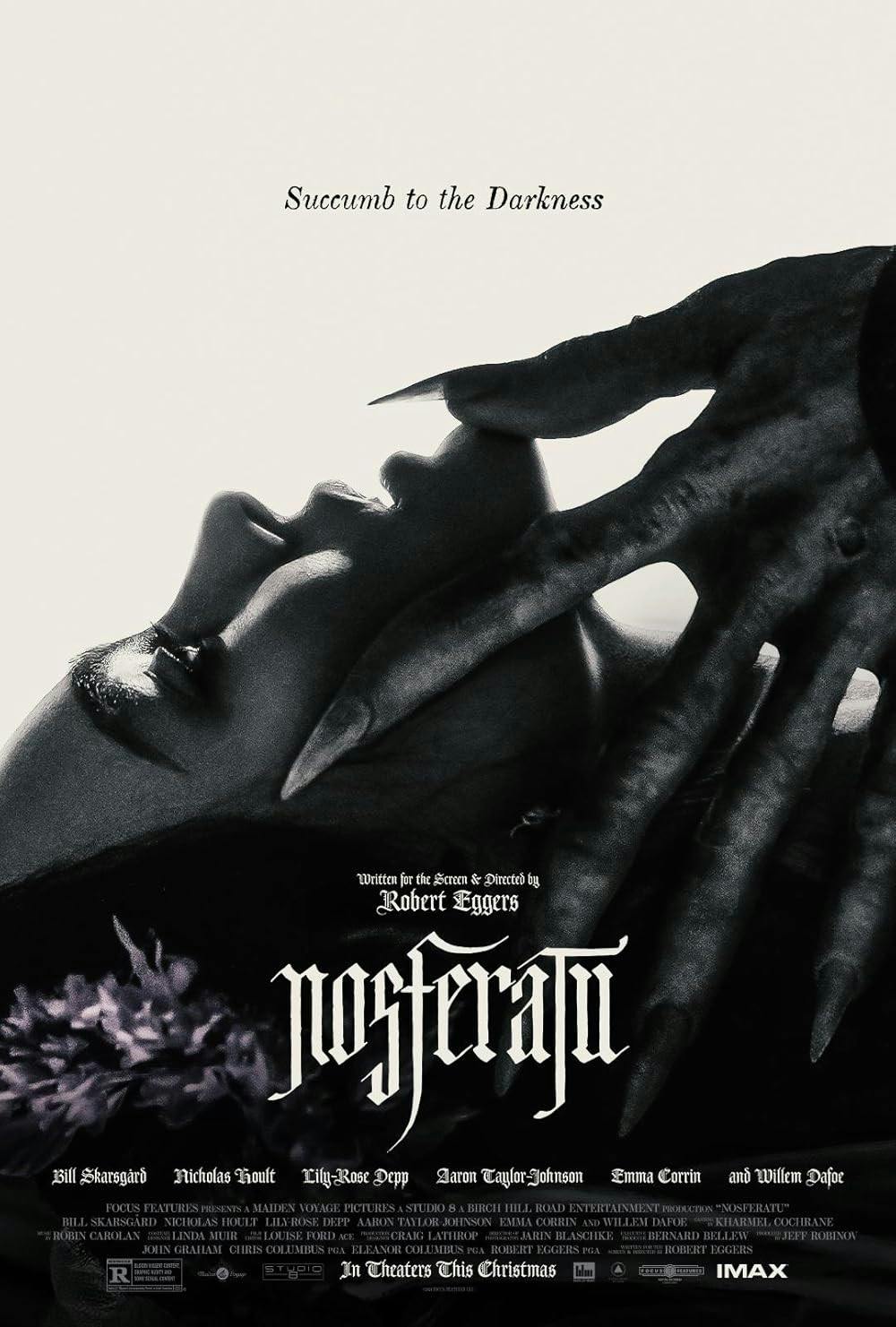Nosferatu Review

Rating: ★★★★
Robert Eggers has returned for his fourth motion picture, a faithful remake of F. W. Murnau's 1922 film “Nosferatu: A Symphony of Horror.” Eggers’ “Nosferatu” is nothing less than a symphony, weaving together painterly gothic imagery and chilling supernatural atmosphere.
Eggers takes the plot of Murnau’s “Nosferatu” with minimal deviation and infuses it with modernity. The film focuses on a newlywed couple, Ellen and Thomas Hutter, played by Lily-Rose Depp and Nicholas Hoult respectively. Depp’s Hutter is haunted by mysterious dread-inducing nightmares, which become worse as her husband is tricked into visiting the castle of Count Orlok, the titular Nosferatu played by a terrifying Bill Skarsgård, and selling him a home in the Hutters’ village of Wisborg, Germany.
Considering Nosferatu’s history of moving beyond its source material, I hoped that Eggers would have changed the story more than he did. Eggers adds one new scene on the way to Transylvania where a local village performs a mysterious blood ritual. It’s haunting and feels natural to the story, leaving me wishing for more original scenes.
The movie's first half is split between two narratives: Nicholas’ expedition to Transylvania to sell the house and Ellen’s vampire-induced struggles. Depp’s acting carries her side of the story, putting on a physical performance that is as unrelenting as it is monstrous. Her seizures and convulsions are otherworldly and – despite how frequent they are – never cease to frighten.
That’s not to say that “Nosferatu” is unoriginal; its style and distinct gothic identity have been severely missing in the horror genre. With the recent rise of psychological horror such as this year's “Longlegs” and “Heretic,” “Nosferatu” sticks out like an emo-thumb.
The dread of Nosferatu’s arrival seemingly looms over the entire city, foreshadowing death and despair. The film's color palette is muted and dark; most scenes are lit by dim candlelight. This causes many shots to leave vast parts of the screen in total darkness, building a baseline level of dread. The gothic style is evident in the costume, set and makeup design, all done with a keen attention to detail. All this creates a feeling of anxious awe: every door opening or corner turn is simultaneously terrifying, gorgeous and grand. Some shots feel closer to a painting than a horror movie scene.
The film's second half leans much heavier into exposition. This is disappointing; I missed the mystery and suspense that the first half was so dense with. The saving grace to this is Professor Albin Eberhart Von Franz, an estranged philosopher dedicated to the dark arts. He is played by Willem Dafoe, whose talent and fitness for the role make him a joy to watch. Eggers’ writing has always been outstanding; while it doesn’t live up to the dark wittiness present in “The Lighthouse” (nor did I expect it to), it still never bores or strays from its 19th-century gothic style.
Overall, “Nosferatu” is absolutely worth a watch. Eggers’ style is infectious, and Depp's performance is one of a kind. Don’t expect another creative bombshell like some of Eggers’ other pictures; see it as an homage to horror’s classic past and a gate to its bright future.
More from The Rice Thresher

“You need a therapist, not a keyboard”: Loretta Ross on calling in
Loretta Ross jokes that she can “talk as long as Fidel Castro.” These days, her urgency is reserved for speaking against the 'call out' — the act of public shaming as a corrective measure — which she said has become as "inevitable as gravity” during her lecture at Duncan Hall on April 14.

Review: ‘Daredevil: Born Again’ struggles with identity but shows promise
Following Netflix’s acclaimed third season of "Daredevil," expectations were understandably high for Marvel’s new Disney+ continuation, "Daredevil: Born Again." Unfortunately, the series suffers noticeably from a split personality, caught between excellence and confused mediocrity.

Rob Kimbro returns to Rice, focusing on ‘stories that matter’
When Rob Kimbro graduated from Rice University in 1995, he said he envisioned a career in the United States Foreign Service. Now, nearly three decades later, he returns as a full-time lecturer in the theatre program having established himself in Houston’s theater community and as a mentor to Rice students.

Please note All comments are eligible for publication by The Rice Thresher.